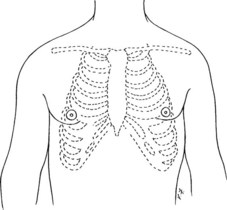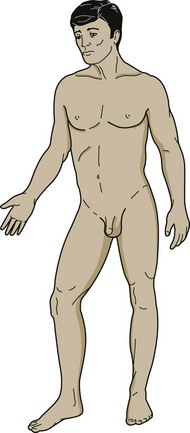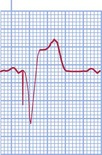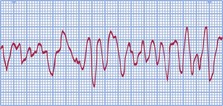Chapter14 Note: Thousands of additional practice questions are available on the enclosed companion CD. 1. When planning discharge teaching for a young adult, the nurse should include the potential health problems common in this age group. What should the nurse include in this teaching plan? 2. What principle of teaching specific to an older adult should the nurse consider when providing instruction to such a client recently diagnosed with diabetes mellitus? 1. Knowledge reduces general anxiety. 2. Capacity to learn decreases with age. 3. Continued reinforcement is advantageous. 3. A 76-year-old male client asks the nurse about the chances of getting osteoporosis like his wife. Which is the best response by the nurse? 1. “This is only a problem for women.” 2. “Exercise is a good way to prevent this problem.” 3. “You are not at risk because of your small frame.” 4. What is the priority when working with a group of middle-aged adult clients? 5. Which factor does the nurse consider most likely contributes to the increased incidence of hip fractures in older adults? 2. Tears in the tympanic membrane 3. Difficulty hearing women’s voices 4. Decrease of hair in the auditory canal 8. A 93-year-old client in a nursing home has been eating less food during mealtimes. What is the priority nursing intervention? 1. Substitute a supplemental drink for the meal. 2. Spoon-feed the client until the food is completely eaten. 3. Allow the client a longer period of time to complete the meal. 4. Arrange a consultation for the placement of a gastrostomy tube. 9. A 78-year-old client who has hypertension is beginning treatment with furosemide (Lasix). Considering the client’s age, what should the nurse teach the client to do? 11. Which client statement indicates an understanding of the nurse’s instructions concerning a Holter monitor? 1. “The only times the monitor should be taken off is for showering and sleep.” 2. “The monitor will record my activities and symptoms if an abnormal rhythm occurs.” 3. “The results from the monitor will be used to determine the size and shape of my heart.” 4. “The monitor will record any abnormal heart rhythms while I go about my usual activities.” 12. A client with a history of dysrhythmias is to wear a Holter monitor for 24 hours on an outpatient basis. What should the nurse teach the client to do while wearing the monitor? 13. A client with a dysrhythmia is admitted to telemetry for observation. In the morning the client asks for a cup of coffee. What is the nurse’s best response? 1. “Hot drinks such as coffee are not good for your heart.” 2. “Coffee is not permitted on the diet that was ordered for you.” 3. “You cannot have coffee. I can bring you a cup of tea if you like.” 4. “Coffee has caffeine that can affect your heart. It should be avoided.” 14. A client who had several episodes of chest pain is scheduled for an exercise electrocardiogram. Which explanation should the nurse include when teaching the client about this procedure? 1. “This is a noninvasive test to check your heart’s response to physical activity.” 2. “This test is the definitive method to identify the actual cause of your chest pain.” 3. “The findings of this test will be of minimal assistance in the treatment of angina.” 4. “The findings from this minimally invasive test will show how your body reacts to exercise.” 15. A client is admitted with chest pain unrelieved by nitroglycerin, an elevated temperature, decreased blood pressure, and diaphoresis. A myocardial infarction is diagnosed. Which should the nurse consider as a valid reason for one of this client’s physiologic responses? 1. Parasympathetic reflexes from the infarcted myocardium cause diaphoresis. 2. Inflammation in the myocardium causes a rise in the systemic body temperature. 3. Catecholamines released at the site of the infarction cause intermittent localized pain. 4. Constriction of central and peripheral blood vessels causes a decrease in blood pressure. 16. What must the nurse do to determine a client’s pulse pressure? 1. Multiply the heart rate by the stroke volume. 2. Subtract the diastolic from the systolic reading. 3. Determine the mean blood pressure by averaging the two. 4. Calculate the difference between the apical and radial rate. 17. After surgery for insertion of a coronary artery bypass graft (CABG), a client develops a temperature of 102° F (38.8° C). What priority concern related to elevated temperatures does a nurse consider when notifying the health care provider about the client’s temperature? 1. A fever may lead to diaphoresis. 2. A fever increases the cardiac output. 3. An increased temperature indicates cerebral edema. 18. A nurse is teaching a group of clients with peripheral vascular disease about a smoking cessation program. Which physiologic effect of nicotine should the nurse explain to the group? 1. Constriction of the superficial vessels dilates the deep vessels. 2. Constriction of the peripheral vessels increases the force of flow. 3. Dilation of the superficial vessels causes constriction of collateral circulation. 4. Dilation of the peripheral vessels causes reflex constriction of visceral vessels. 19. During an interview, the nurse discovers that the spouse of a debilitated, chronically constipated client digitally removes stool from the client’s rectum. What response to disimpaction is the nurse attempting to prevent by presenting other strategies to regulate the client’s bowel movements? 21. A nurse is caring for a client with chronic occlusive arterial disease. What precipitating cause is the nurse most likely to identify for the development of ulceration and gangrenous lesions? 1. Emotional stress, which is short-lived 2. Poor hygiene and limited protein intake 3. Stimulants such as coffee, tea, or cola drinks 22. A client is prescribed prolonged bed rest after surgery. Which complication does the nurse expect to prevent by teaching this client to avoid pressure on the popliteal space? 23. A nurse in the postanesthesia care unit is caring for a client who received a general anesthetic. Which finding should the nurse report to the health care provider? 1. Client pushes the airway out. 2. Client has snoring respirations. 3. Respirations of 16 breaths/min are shallow. 24. After abdominal surgery a client suddenly reports numbness in the right leg and a “funny feeling” in the toes. What should the nurse do first? 1. Elevate the legs and tell the client to drink more fluids. 2. Instruct the client to remain in bed and notify the health care provider. 3. Rub the client’s legs to stimulate circulation and cover the client with a blanket. 4. Tell the client about the dangers of prolonged bed rest and encourage ambulation. 25. After a bilateral lumbar sympathectomy a client has a sudden drop in blood pressure, but there is no evidence of bleeding. What should the nurse identify as the most likely cause of the change in blood pressure? 26. A nurse inspects a two-day-old intravenous site and identifies erythema, warmth, and mild edema. The client reports tenderness when the area is palpated. What should the nurse do first? 3. Redness in the affected area 4. Pitting edema of the lower leg 5. Ecchymotic areas around the ankle 28. A client who had surgery 24 hours ago reports pain in the calf. Assessment reveals redness and swelling at the site of discomfort. What should the nurse do? 30. A nurse is teaching a client about the use of antiembolism stockings. What instruction should the nurse include? 1. Keep the stockings on two hours and off two hours. 2. Wear the stockings only at bedtime when activity lessens. 3. Put the stockings on before getting out of bed in the morning. 4. Leave the stockings in place until the health care provider advises otherwise. 31. A health care provider orders thigh-high antiembolism stockings for a client with varicose veins. The client’s thighs are heavier than the lower legs, and the stockings fit on the lower leg but are causing discomfort and indentations on the upper thighs. What should the nurse do? 1. Replace the thigh-high stockings with knee-high stockings. 2. Leave the antiembolism stockings off to prevent tissue damage. 3. Roll the top of the stockings to below the knees to limit popliteal pressure. 4. Ask the health care provider if an elastic bandage can be used in place of the stockings. 32. What should the nurse teach a client who is taking antihypertensives to do to minimize orthostatic hypotension? 1. Wear support hose continuously. 2. Lie down for 30 minutes after taking medication. 3. Avoid tasks that require high-energy expenditure. 4. Sit on the edge of the bed for 5 minutes before standing. 33. A client being treated for hypertension reports having a persistent hacking cough. What class of antihypertensive should the nurse identify as a possible cause of this response when reviewing a list of this client’s medications? 34. What client response indicates to the nurse that a vasodilator medication is effective? 1. Pulse rate decreases from 110 to 75 2. Absence of adventitious breath sounds 3. Increase in the daily amount of urine produced 35. What should the nurse assess to determine if a client is experiencing the therapeutic effect of valsartan (Diovan)? 36. What information should the nurse include when teaching a client with heart disease about cholesterol? 1. Can be found in both plant and animal sources 2. Causes an increase in serum high-density lipoprotein 3. Should be eliminated because it causes the disease process 4. Decreases when unsaturated fats are substituted for saturated fats 37. Which instructions should the nurse include in the teaching plan for a client with hyperlipidemia who is being discharged with a prescription for cholestyramine (Questran)? 1. “Increase your intake of fiber and fluid.” 2. “Take the medication before you go to bed.” 3. “Check your pulse before taking the medication.” 4. “Contact your health care provider if your skin or sclera turn yellow.” 38. A nurse is providing dietary instruction to a client with cardiovascular disease. Which dietary selection by the client indicates the need for further instruction? 1. Increase dietary intake of potassium. 2. Avoid prolonged exposure to the sun. 3. Schedule regular ophthalmic examinations. 4. Take the medication at least a half hour before meals. 5. Contact your health care provider if skin becomes gray-bronze. 41. Which topic should the nurse determine is most appropriate when presenting health-related instruction to clients from an African-American community? 42. Amlodipine (Norvasc) is prescribed for a client with hypertension. Which response to the medication should the nurse instruct the client to report to the health care provider? 44. What should the nurse identify as the primary cause of the pain experienced by a client with a coronary occlusion? 45. What instructions about the use of nitroglycerin should the nurse provide to a client with angina? 1. “Identify when pain occurs, and place 2 tablets under the tongue.” 2. “Place 1 tablet under the tongue, and swallow another when pain is intense.” 3. “Before physical activity place 1 tablet under the tongue, and repeat the dose in 5 minutes if pain occurs.” 4. “Place 1 tablet under the tongue when pain occurs, and use an additional tablet after the attack to prevent recurrence.” 46. Which nursing action is most important when caring for a client after a cardiac catheterization? 47. For which common complication of myocardial infarction should the nurse monitor clients in the coronary care unit? 48. A nurse prepares a client for insertion of a pulmonary artery catheter. What information can be obtained from monitoring the pulmonary artery pressure? 50. An older adult with cerebral arteriosclerosis is admitted with atrial fibrillation and is started on a continuous heparin infusion. What clinical finding enables the nurse to conclude that the anticoagulant therapy is effective? 51. What specifically should the nurse monitor when a client is receiving a platelet aggregation inhibitor such as clopidogrel (Plavix)? 52. A client is receiving warfarin (Coumadin). Which test result should the nurse use to determine if the daily dose of this anticoagulant is therapeutic? 53. What should the nurse teach a client to expect when preparing for discharge after surgery for a coronary artery bypass graft? 1. Mild fever and extreme fatigue for several weeks after surgery 2. Cessation of drainage from the incisions after hospitalization 3. Mild incisional pain and tenderness up to three weeks after surgery 4. Some edema in the leg used for the donor graft is expected with activity 55. A nurse identifies signs of electrolyte depletion in a client with heart failure who is receiving bumetanide (Bumex) and digoxin (Lanoxin). What does the nurse determine is the cause of the depletion? 56. A client is in cardiogenic shock. What explanation of cardiogenic shock should the nurse include when responding to a family member’s questions about the condition? 57. What clinical indicator is the nurse most likely to identify when completing a history and physical assessment of a client with complete heart block? 58. A nurse in the emergency department is assigned to care for four clients with serious health problems. Which health problem should the nurse identify as the priority? 59. While a pacemaker catheter is being inserted, the client’s heart rate drops to 38 beats/min. What medication should the nurse expect the health care provider to prescribe? 60. A client with a bundle branch block is on a cardiac monitor. What ECG change should the nurse identify on the client’s cardiac monitor? 63. In addition to atrial fibrillation, what ventricular rhythm exhibited by a client does the nurse determine may be converted to a sinus rhythm by cardioversion? 64. What nursing action should be included in the plan of care for a client who had a permanent fixed (asynchronous) pacemaker inserted? 1. Instruct the client that it is better to sleep on two pillows. 2. Encourage the client to reduce activity from former levels. 3. Teach the client to keep daily accurate records of the pulse. 4. Inform the client that the pacemaker functions when the heart rate drops below a preset rate. 65. What assessment of the pulse should the nurse identify when a client’s on-demand pacemaker is functioning effectively?
Medical-Surgical Nursing
Review Questions with Answers and Rationales
 Denotes alternate format question.
Denotes alternate format question.
Growth and Development
 6. Which age-related change should the nurse consider when formulating a plan of care for an older adult? Select all that apply.
6. Which age-related change should the nurse consider when formulating a plan of care for an older adult? Select all that apply.
 7. A nurse is caring for an older adult with a hearing loss secondary to aging. What can the nurse expect to identify when assessing this client? Select all that apply.
7. A nurse is caring for an older adult with a hearing loss secondary to aging. What can the nurse expect to identify when assessing this client? Select all that apply.
Circulatory System (Cardiovascular, Blood, and Lymphatic Systems)
 10. A nurse must obtain a client’s apical pulse. Place an X over the site where the nurse should place the stethoscope.
10. A nurse must obtain a client’s apical pulse. Place an X over the site where the nurse should place the stethoscope.

 20. A nurse is assessing the legs of a client with a history of chronic venous insufficiency. What physiologic changes should the nurse conclude are the result of this disease process? Select all that apply.
20. A nurse is assessing the legs of a client with a history of chronic venous insufficiency. What physiologic changes should the nurse conclude are the result of this disease process? Select all that apply.
 27. While convalescing from abdominal surgery a client develops thrombophlebitis. Which clinical indicators of this complication should the nurse expect to identify when assessing the client? Select all that apply.
27. While convalescing from abdominal surgery a client develops thrombophlebitis. Which clinical indicators of this complication should the nurse expect to identify when assessing the client? Select all that apply.
 29. A nurse is assessing arterial perfusion in a client who had surgery with placement of a graft for an aneurysm in the left femoral artery. Place an X over the site of the pulse that should be assessed to determine maximum arterial perfusion distal to the operative site.
29. A nurse is assessing arterial perfusion in a client who had surgery with placement of a graft for an aneurysm in the left femoral artery. Place an X over the site of the pulse that should be assessed to determine maximum arterial perfusion distal to the operative site.

 39. A nurse asks a client with ischemic heart disease to identify the foods that are most important to restrict. The nurse determines that the client understands the dietary instructions when the client identifies the following foods. Select all that apply.
39. A nurse asks a client with ischemic heart disease to identify the foods that are most important to restrict. The nurse determines that the client understands the dietary instructions when the client identifies the following foods. Select all that apply.
 40. Which instructions should the nurse include in the teaching plan for a client who will be taking simvastatin (Zocor) when discharged? Select all that apply.
40. Which instructions should the nurse include in the teaching plan for a client who will be taking simvastatin (Zocor) when discharged? Select all that apply.
 43. Atenolol (Tenormin) 150 mg by mouth is prescribed for a client with hypertension. Each tablet contains 50 mg. How many tablets should the nurse administer? Record your answer using a whole number.
43. Atenolol (Tenormin) 150 mg by mouth is prescribed for a client with hypertension. Each tablet contains 50 mg. How many tablets should the nurse administer? Record your answer using a whole number.
 49. A client with a thromboembolic disorder is receiving a continuous intravenous infusion of heparin 1000 units per hour. There are 25,000 units of heparin in 500 mL of 5% dextrose solution. At how many milliliters per hour should the nurse set the rate on the electronic infusion control device? Record your answer using a whole number.
49. A client with a thromboembolic disorder is receiving a continuous intravenous infusion of heparin 1000 units per hour. There are 25,000 units of heparin in 500 mL of 5% dextrose solution. At how many milliliters per hour should the nurse set the rate on the electronic infusion control device? Record your answer using a whole number.
 54. A client with left ventricular heart failure is taking digoxin (Lanoxin) 0.25 mg daily. What changes does the nurse expect to find if this medication is therapeutically effective? Select all that apply.
54. A client with left ventricular heart failure is taking digoxin (Lanoxin) 0.25 mg daily. What changes does the nurse expect to find if this medication is therapeutically effective? Select all that apply.
 61. A nurse observes the cardiac monitor of a client who has had a pacemaker inserted. Place an X on the rhythm strip where there is evidence of pacemaker function.
61. A nurse observes the cardiac monitor of a client who has had a pacemaker inserted. Place an X on the rhythm strip where there is evidence of pacemaker function.

 62. A nurse observes the following dysrhythmia on a client’s cardiac monitor. What rhythm does the nurse identify?
62. A nurse observes the following dysrhythmia on a client’s cardiac monitor. What rhythm does the nurse identify?

![]()
Stay updated, free articles. Join our Telegram channel

Full access? Get Clinical Tree


